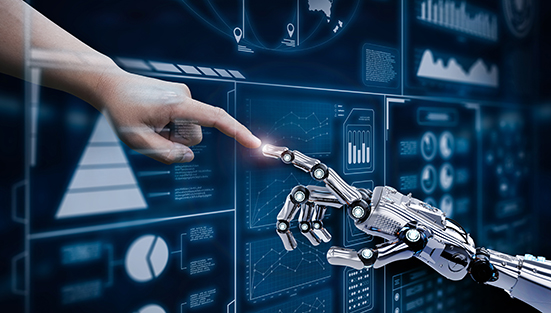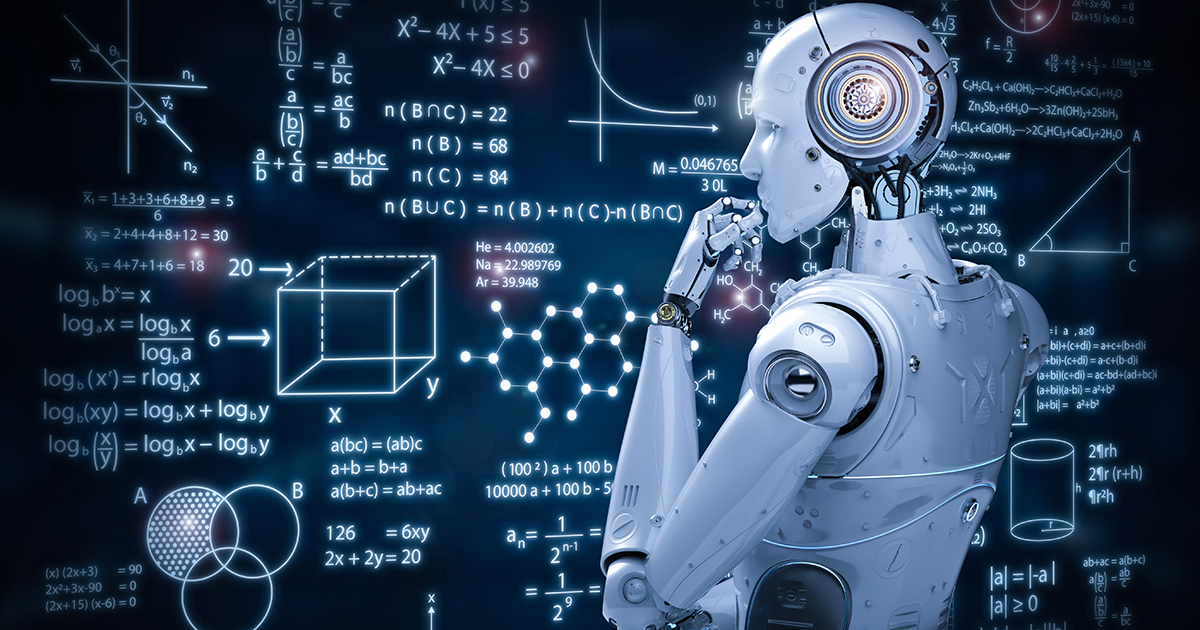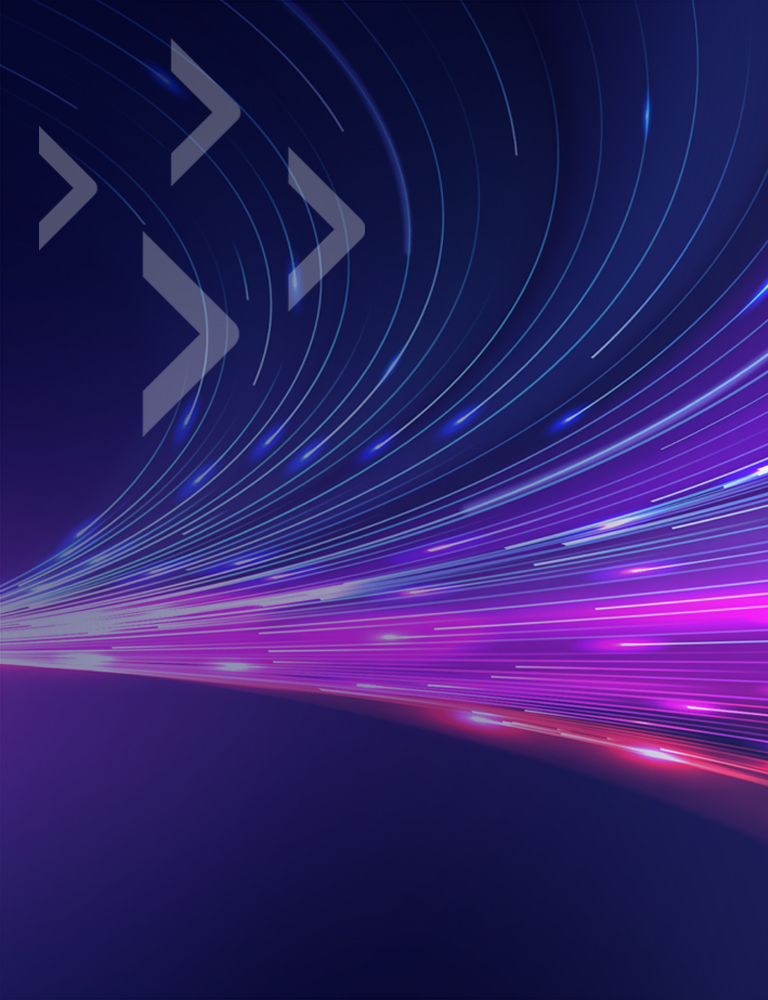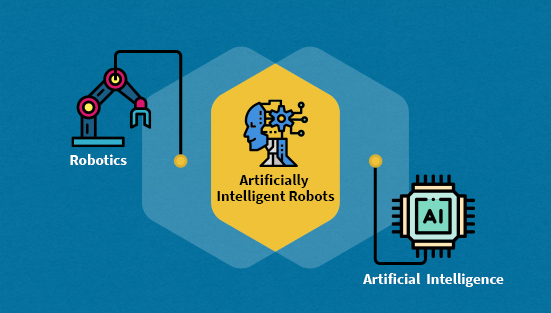What is the inherent connection between Robotics and AI?

Artificial intelligence and machine learning have been the two hot trending technologies for quite a while now. However, the interest in these new-age technologies peaked significantly right after the onset of coronavirus, when the world was looking forward to digital tools and platforms for sustenance. According to an IDC report, the global revenue of the AI market touched US$ 156.5 billion, marking a jump of 12.3% from 2019. This trend is only bound to rise further up in the next few years.
Of all the diverse fields of artificial intelligence, robotics has gained massive popularity across industries, and rightly so. The biggest benefit of robotics is that it streamlines operations through automation and precision. Although at a nascent stage, robotics depicts a promising growth graph with plenty of scope for employment and innovation.
Artificial Intelligence and Robotics: What’s the difference?
Artificial intelligence focuses on designing sophisticated computer programs and applications that can perform a wide range of tasks that usually requires human intelligence. AI and machine learning algorithms can learn and perceive from experience, solve complex problems, understand natural human languages, and perform logical reasoning tasks. On the other hand, robotics technology involves physical robots that are programmed to perform diverse actions/tasks, either autonomously or semi-autonomously.
Thus, the most significant difference between AI and robotics is that the former is all about programming intelligence, whereas the latter involves building physical robots that can function intelligently.
While robotics and artificial intelligence can exist independently, scientists are increasingly focused on combining the two because of the inherent potential the combination holds. A Venn diagram of artificial intelligence and robotics gives us an artificially intelligent robot. What sets such a robot apart from others is the level of autonomy at which it operates. Artificially intelligent robots are the link between AI and robotics - they are manipulated by AI programs and are designed to optimise tasks.
If you wish to delve deep into AI and robotics’ nuances, the best course of action would be to opt for AI and machine learning courses. Two such excellent courses would be the Machine learning-Linear Regression and Artificial Intelligence Foundations. These courses are handpicked by industry experts and recognised by the Government of India. You will learn about the latest tech trends, fundamental data science and statistical concepts, basic concepts of databases OOP, AI and data science applications in the industry, and also the uses of different data science and visualization tools.
What’s best is that you can access these courses for free and also receive a certificate of completion!

Artificial intelligence and Robotics: A force to reckon with!
When coupled together, AI and robotics can become powerful tool for any business or organization. In fact, AI-powered robotic solutions are fast gaining a strong foothold across industries, including healthcare, automotive, retail, manufacturing, education, logistics, transportation, etc.
AI and robotics have joined forces to give us:
- Virtual assistants and chatbots that function on ML and NLP technologies to communicate with humans in their natural languages. While chatbots have completely transformed customer support operations, virtual assistants like Siri, Alexa, and Cortana have made our lives so much more convenient.
- Highly graphic and advanced games having intuitive characters who can mimic humans. Gaming companies leverage AI and robotics to gather and process the user data to create games, characters, visuals, and interfaces that align perfectly with the target audience’s interests and preferences. True Blue Casino, an online gambling platform uses AI-based algorithms to manipulate the outcome of betting games!
- Self-driving cars and autonomous flying technology that use AI and computer vision to navigate through busy streets or air by tactfully moving past obstacles. Autonomous flying devices like drones can perform a host of tasks, including 360-degree aerial view monitoring, video recording, security surveillance, and so much more.
These are only a few examples of innovative solutions brought forth by AI and robotics technologies. But then we’re only witnessing the tip of the iceberg - there’s so much more to come!
Artificial intelligence and machine learning have been trending technologies, especially since the onset of coronavirus, which accelerated the need for digital tools. According to an IDC report, the AI market's global revenue hit $156.5 billion, a 12.3% increase from 2019. Robotics, a field within artificial intelligence, has gained massive popularity for its ability to streamline operations through automation and precision.
Artificial intelligence involves creating sophisticated programs that perform tasks requiring human intelligence, while robotics focuses on building physical robots programmed for diverse actions. The combination of AI and robotics results in artificially intelligent robots capable of optimizing tasks autonomously.
For those looking to delve deeper into these fields, taking courses in artificial intelligence and machine learning is a great starting point. Courses like Machine Learning-Linear Regression and Artificial Intelligence Foundations offer comprehensive knowledge and are recognized by the Government of India. These courses cover tech trends, data science, statistical concepts, and practical applications, providing a solid foundation for anyone wanting to learn about artificial intelligence and its applications in the industry.
Stay ahead of the curve and fuel your curiosity with our comprehensive and engaging popular blogs.:
https://futureskillsprime.in/knowledge-center/tech-simplified/artificial-intelligence-power-sector



